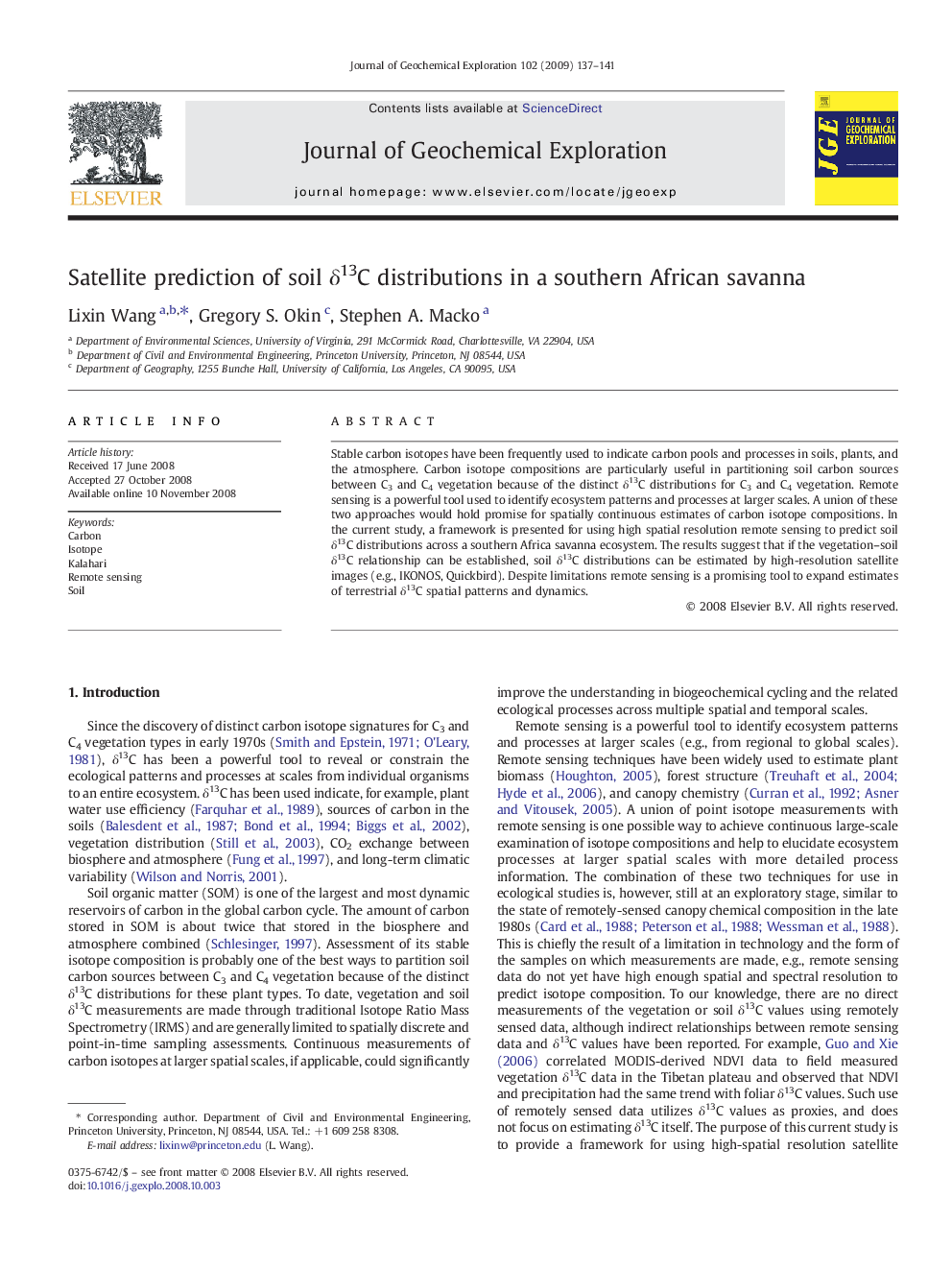| Article ID | Journal | Published Year | Pages | File Type |
|---|---|---|---|---|
| 4458036 | Journal of Geochemical Exploration | 2009 | 5 Pages |
Stable carbon isotopes have been frequently used to indicate carbon pools and processes in soils, plants, and the atmosphere. Carbon isotope compositions are particularly useful in partitioning soil carbon sources between C3 and C4 vegetation because of the distinct δ13C distributions for C3 and C4 vegetation. Remote sensing is a powerful tool used to identify ecosystem patterns and processes at larger scales. A union of these two approaches would hold promise for spatially continuous estimates of carbon isotope compositions. In the current study, a framework is presented for using high spatial resolution remote sensing to predict soil δ13C distributions across a southern Africa savanna ecosystem. The results suggest that if the vegetation–soil δ13C relationship can be established, soil δ13C distributions can be estimated by high-resolution satellite images (e.g., IKONOS, Quickbird). Despite limitations remote sensing is a promising tool to expand estimates of terrestrial δ13C spatial patterns and dynamics.
